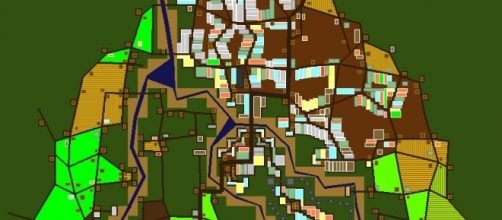A typical gamer would like to claim that graphics is not the most important part of the game. Of course, this is true, but it cannot be denied that graphics quality is one of the major deciding factors with which modern gamers choose what game to play these days. Graphics, more often than not, is what separates "hardcore" and "casual" gamers, and while there is nothing inherently wrong about belonging to either demographic, nowhere has the graphics border been as alienating as in "Dwarf Fortress."
A detailed world simulation
Upon first look, the player will immediately know that "Dwarf Fortress" is a different game.
Its graphics is made entirely in ASCII and everything — from a lump of soil to a tree, to a dwarf digging up a cavern —is represented by a character in ASCII. Already, this creates an atmosphere wherein modern gamers would find themselves lost, transported to a more primitive era of gaming than they are used to. The controls and the interface are just as primitive, clunky, but these design choices come with a reason.
What "Dwarf Fortress" lacks in flair, it makes up in mechanics. And oh, how it makes up for it. See, "Dwarf Fortress" is about achieving realism in simulation, or at least as much realism one can get in a fantasy world. In the game, you lead a small group of dwarves into finding a new dwelling, but unlike most games, you do not command the characters directly.
You just give the orders and hope upon all hope that your dwarves will execute them promptly, if at all.
Your characters have no conventional "Hit Points" to speak of— every part of their body is accounted for. Forget about HP; dwarves now need to figure out how to staunch a bleeding torso, relieve a broken finger, or even deal with the psychological torment of seeing their fellow dwarves drowning in a pool of lava because of a wrong dig order.
Physics and temperature play a factor, too. Gravity and hydromechanics would let you utilize rivers to create waterwheels, which will produce the energy you need for your fortress. Water freezes in winter and thaws in summer; lava turns to hard stone at room temperature.
This could make for creative weapons, like contraptions that can trap potential attackers in ice or obsidian.
Worthy of a place in New York's Museum of Modern Art
When Tarn and Zach Adams developed "Dwarf Fortress," they cared less about the graphics than they did about the actual meat of the game. For one, beautiful graphics would have constrained the engine, and only the most powerful of computers would have been able to run the complex simulations underneath the hood without the graphics processing bugging them down.
It's obvious that the devs did a good job, as the game remains to have a faithful following despite the not-so-polished interface. Perhaps this is also the reason why the game is one of the few games that are showcased in New York's Museum Of Modern Art (MoMA), alongside "Myst" and "SimCity 2000."
As time goes on, computing power grows exponentially, and so does the potential of games like "Dwarf Fortress." Perhaps we'll see the day that this level of simulation would be presented in a newer and shinier way, but for now, we'll settle for the ASCII.


